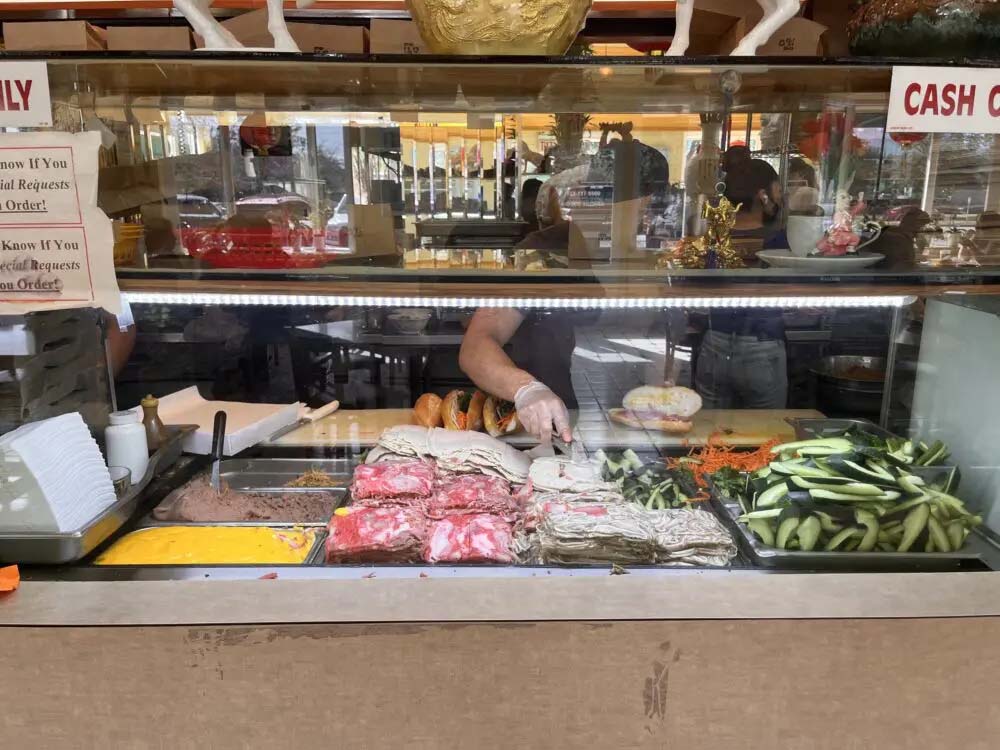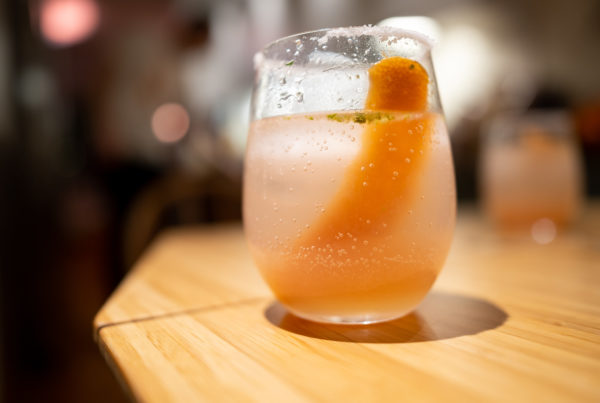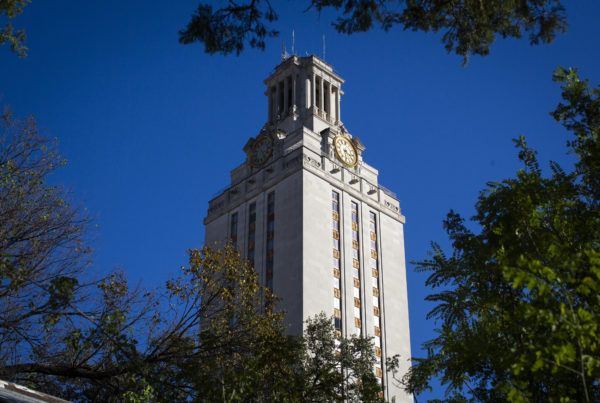From Houston Public Media:
On a Sunday evening at Katy Grand Square, the parking lot of the strip mall was packed. Peeping through the windows, one can see long lines filling up the stores, just short of spilling out the door.
The shopping center is not what you would have found ten years ago in Houston when fewer Asian Americans made up the population. The storefronts are full of transplants to the Houston area — Tim Ho Wan dim sum, SomiSomi soft serve and taiyaki and Kinokuniya Japanese bookstore hail from Hong Kong, Los Angeles and Tokyo.
Haidilao, the largest hot pot chain in China, opened its Katy location in 2021. The inside has marble countertops, a floral wall for picture posing and a robot food runner serving plates of noodles, meat and veggies.
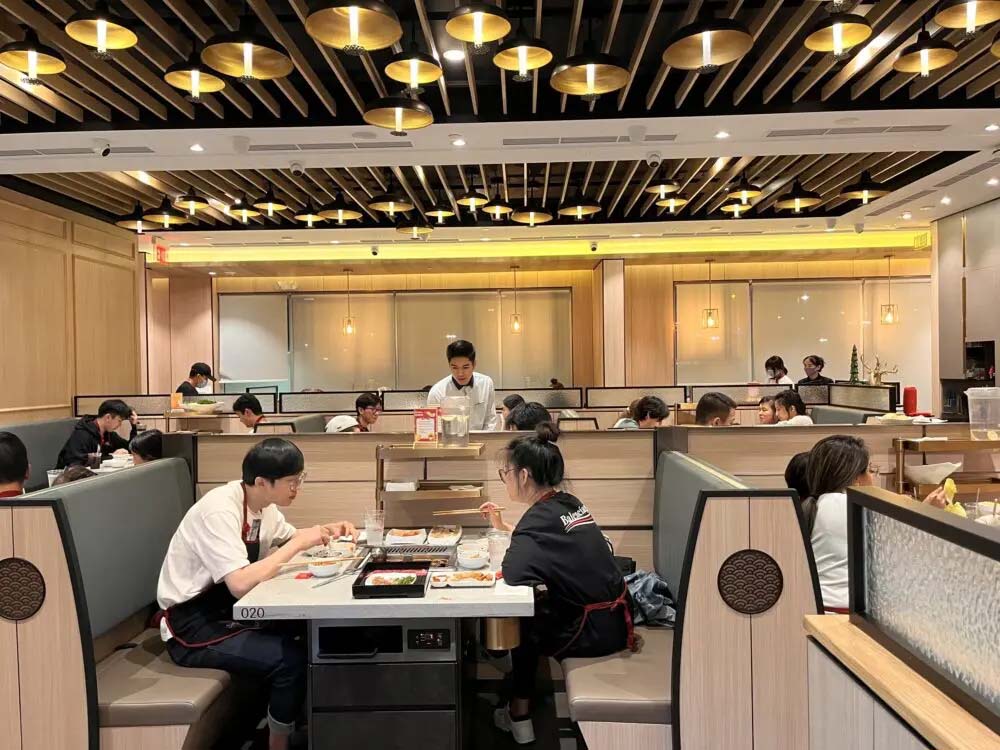
Haidilao is the biggest hot pot chain in China. It opened a location at Katy Grand Square in 2021.
Restaurants like this are contributing to a changing mosaic of Asian restaurants in Bellaire Chinatown, Sugar Land and Katy. These areas are seeing a growing number of outside franchises from New York, California and Asia that are setting up shop in Houston. These places often put a greater emphasis on ambiance, service and Instagram-ability, often catering to a younger clientele.
“Yeah, they’re definitely taking over,” said Julie Nong, a food blogger on Instagram and TikTok that goes by the username @juliejulez.jpg. She grew up in Southwest Chinatown and features many of those restaurants on her social media.
“I think this is no secret, but the cost of living in Texas is much cheaper,” Nong said. “If they fail, it’s not that big of a loss I think compared to failing in such a major city like New York or Los Angeles.”
One place welcoming those shops has been D-Square on Bellaire Blvd — one of the founding shopping centers of Southwest Chinatown in the 80s.
“We were great, amazing pioneers and now we’re old,” said Beatrice Wong, the Managing Director of D-Square.
She said the clientele a few years back used to be 40 to 50 years old on average. They were looking for delicious cheap eats.
“It’s best value,” Wong said. “I walk out paying 20 bucks for dinner. I eat a lot and I have two boxes to take home.”
Now, the goal is to attract a younger crowd in order to stay relevant, Wong said. The center has since spent a significant amount of money renovating the facades and on landscaping.
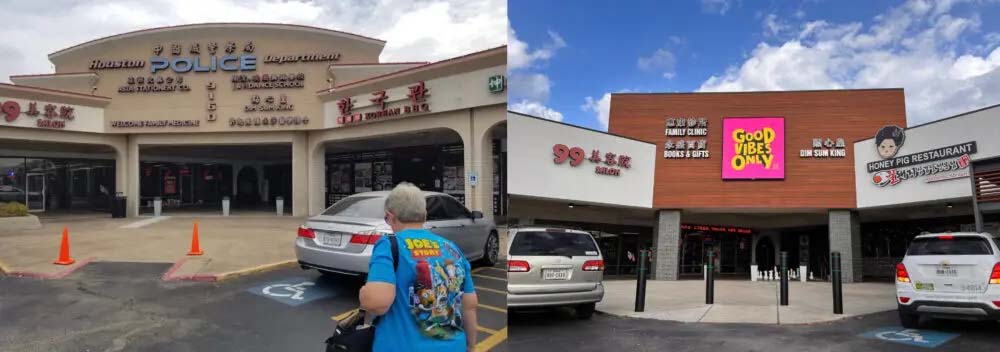
D Square Shopping Center in Southwest Chinatown. In recent years the shopping center has been renovated as a way of a rebrand to attract younger customers.
Left: Google Maps, Right: Sara Willa Ernst
“Everything right now is about experience,” Beatrice Wong said. “We did a lot of things that make it a nice place where you actually slow down and walk in, not just want to get in and get out. We try to do culture, authentic cuisine, as well as an Instagramable factor.”
Social media and digital marketing has become a big part of the shopping center’s efforts to attract more and younger customers. D-Square is part of a new trend of consolidated marketing. This is when the shopping center itself has a distinct brand, not just the individual restaurants.
D-Square has hired a social media specialist to help owners promote their restaurants.
But not everyone in Chinatown believes that’s the right way to operate their business. Symonds Wong is the owner of Hong Kong Cafe, a longstanding cha chaan teng or hongkongese diner, located in D-Square.
“The 20 years that I’ve been open, I’ve never advertised,” Symonds Wong said. “I do my business. I keep my standards up and make sure I’m happy with that. And so I don’t worry about what other people are doing.”
He said Houston Chinatown has changed a lot over the years, including the taste of the food. In some major ways, the identity of Chinatown is stepping away from its roots.
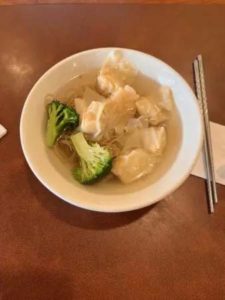
Hong Kong Cafe, a cha chaan tang or a hongkongese diner, serves comfort foods like shrimp wonton noodle soup.
“As long as you make authentic flavors — and for me that’s Hong Kong flavors — then you won’t be replaced,” Symonds Wong said. “But now, a lot of what customers are tasting in Chinatown are no longer traditional flavors. They’re nothing like what it used to be.”
He’s seeing these changes happening around him.
A poster outside a vacant storefront says D-Square is seeking “trendy retailers,” “young fashion brands” and “themed cafes.”
Beatrice Wong said the average age of their customers is half what it used to be. The demographics are shifting.
“We see more diverse traffic — more races and ethnic groups,” Beatrice Wong said. “A lot more Midtown traffic and downtown traffic too. Before Chinatown was mostly a lot of Katy, Sugarland and Pearland people coming in.”
Bellaire Food Street has also been a destination for a lot of that clientele. Last Saturday, a line formed out the door at Two Hands Corndog — a Korean street food eatery.
“It’s a twist on the Western corn dog,” said Kevin Kan, the developer behind the shopping mall. “Throw some crushed spicy Cheetos. People understand that kind of food and they’re more than willing to try it..”
Kan said his goal for Bellaire Food Street, which opened in 2019, was to make Chinatown more approachable.
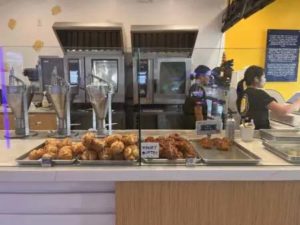
Beard Papa Cream Puffs is a franchise originally from Japan that opened up in Bellaire Food Street shopping mall in 2019.
Sara Willa Ernst
In previous generations, the menus would only be in Chinese or poorly translated English.
“To a lot of people — non-Asians especially — it’s very intimidating,” Kan said. “If the menu doesn’t have pictures on it, you’re kind of playing a guessing game.”
The global obsession with Asian entertainment — K-pop, k-dramas and anime — has trickled down to Houston and is another reason fueling the new traffic into Chinatown, Sugar Land and Katy, according to Food Blogger Julie Nong.
She used the example of Jimin from BTS — a member of the biggest K-pop boy band in the world.
“(Fans) are like ‘Jimin drinks banana milk at practice. I have to get banana milk,'” Nong said. “And you’ll see a bunch of people that are not Asian in H Mart buying banana milk. And it’s so cool.”
However, the trends affecting Chinatown go beyond Asia’s soft power over the United States.
Over the past 24 years, over $50 million of local money has gone into public infrastructure projects along Bellaire Blvd and Fondren Road.
Chinatown is located in a TIRZ or a tax increment reinvestment zone, which allows the area to receive a larger cut of property taxes generated there compared to other parts of Houston.
“Usually TIRZ are created in what would be referred to as a blighted area to try and stimulate private public investment,” said Don Huml with Hawes & Associates, the administrator of TIRZ 20 that includes Chinatown.
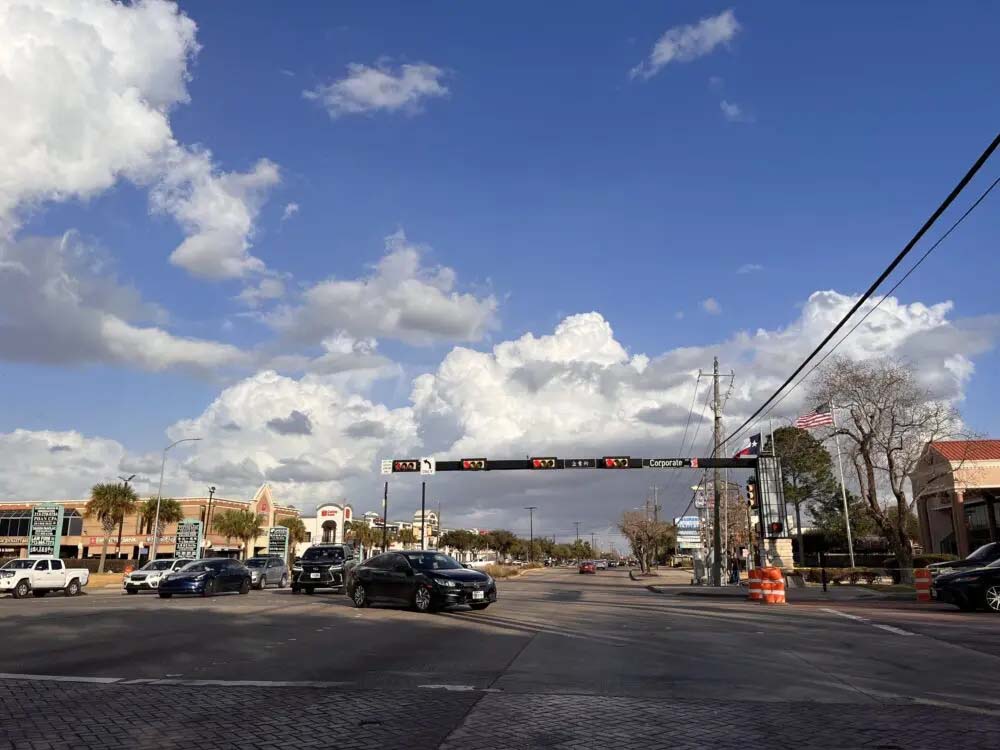
The roads have been repaved and widened along Bellaire Blvd and Fondren Road after TIRZ 20 was created in 1999.
Sara Willa Ernst
The money has gone to repave the street, expand more lanes to alleviate some of the traffic, and fund landscaping, stormwater drainage, new street lights and bus shelters.
In 2017, the City of Houston approved extending the TIRZ expiration by 10 years to 2040.
“That investment really was in part the catalyst that is driving a lot of economic development along Bellaire Boulevard,” Huml said. “Private developers want to be near that because it gives them an advantage and something that will attract customers.”
Stevie Vu has seen the growth of Chinatown over the past few years. He’s one of the founders of Chowdown In Chinatown, a facebook community with over 25,000 followers dedicated to Houston Chinatown restaurants.
Part of his mission is to promote the older eateries and not just the trendy franchises.
“Even though all those are starting to pop up in the city, I still want to focus on the mom and pops,” Vu said.
He said it’s important to have respect for the places that stuck it out when Chinatown didn’t have a bustling economy. He believes that people don’t have to choose between old and new — both can co-exist in today’s Chinatown.
“Because once those are no longer in operation, it’s kind of like a bygone era. We’re never going to see that authentic hand pulled noodles that this person has been doing for half our lives or anything. Those are the ones that pioneered and paved the way for all these new businesses to flourish.”


